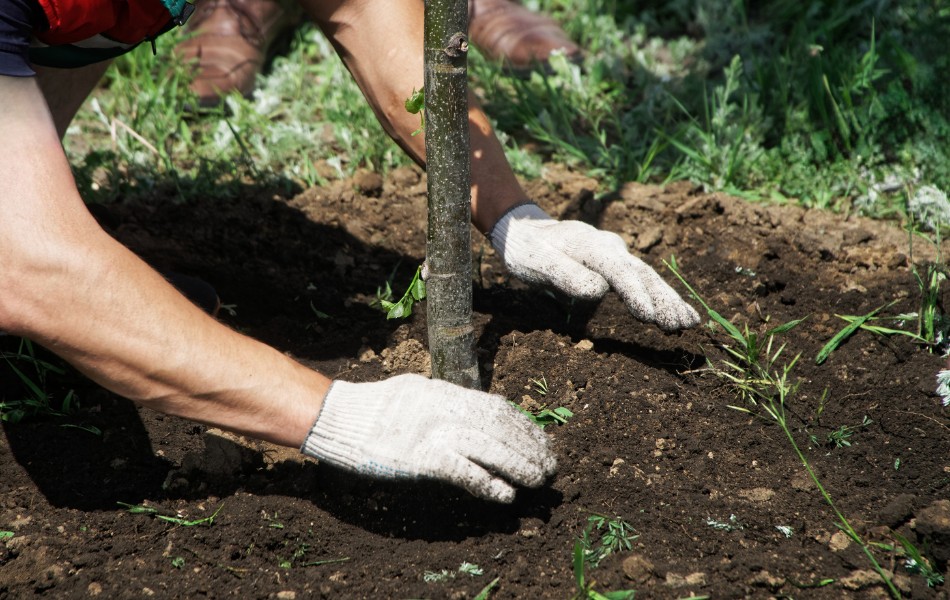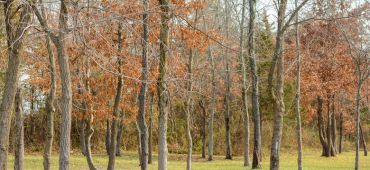Fall Tree Risk Assessment for Property Managers: Protecting St. Charles County Rental Properties from Winter Storm Damage
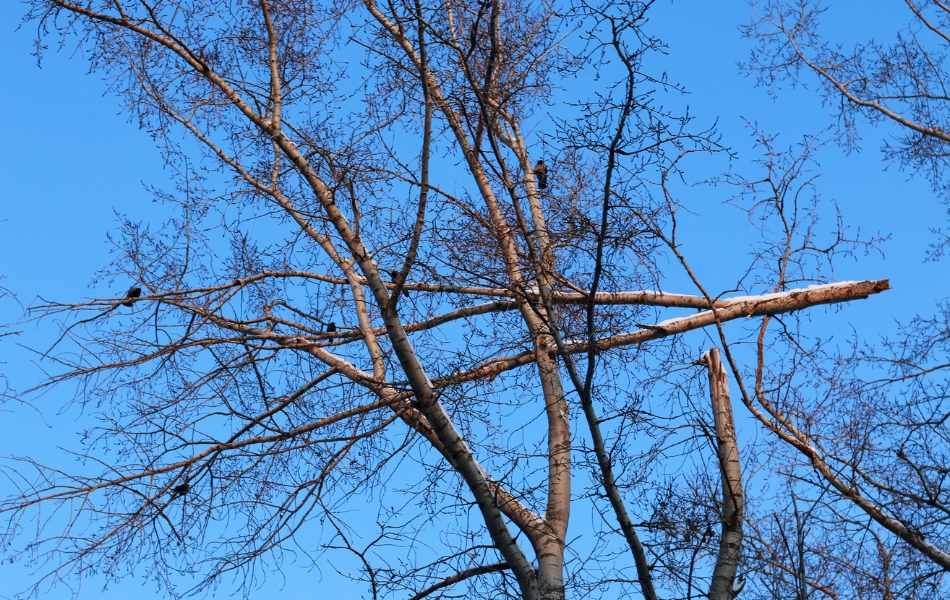
Tree risk assessment for property managers is more than upkeep; it’s required by St. Charles County codes. Stay compliant, protect tenants, and prevent storm damage.
Effective tree risk assessment for property managers becomes especially critical each fall across O’Fallon, Lake St. Louis, and St. Peters rental properties. With St. Charles County’s explicit requirement that “all dead trees and dead tree limbs shall be removed” from residential and commercial properties, property managers must implement systematic tree risk assessment protocols to comply with the Property Maintenance Code while protecting tenants from tree-related hazards before winter storms arrive.
Key Takeaways
- St. Charles County Property Maintenance Code requires removal of all dead trees and limbs from residential properties one acre or less, commercial properties, and any property with structures at risk of damage.
- Fall timing allows property managers to identify and address hazardous trees before winter storms, when emergency response becomes significantly more expensive and disruptive to tenants.
- Systematic assessment records provide essential evidence for insurance claims and legal protection when tenant safety incidents occur at rental properties.
- Grouping assessments by geographic area and establishing relationships with Certified Arborists reduces overall maintenance expenses across rental portfolios.
- Proactive risk assessment and vendor relationships enable rapid response when storms damage trees at rental properties.
- ISA Certified Arborist evaluations identify subtle risk factors that untrained property managers often miss, preventing expensive emergency situations and liability claims.
Tree Maintenance Rules Every St. Charles County Property Manager Must Know
The St. Charles County Property Maintenance Code establishes clear obligations for property managers regarding tree maintenance. The code specifically states that “all dead trees and dead tree limbs shall be removed from all tracts or lots” that meet certain criteria, creating legal liability for property managers who fail to maintain safe conditions.
These requirements apply to:
- Residential subdivisions and properties one acre or less in area
- Properties dedicated to commercial or industrial use
- Any property improved with structures or public electric utilities at risk of damage from falling trees or limbs
For property managers, this means virtually every rental property in your portfolio falls under these mandatory removal requirements. Staying ahead of these rules takes more than routine upkeep, it requires a partner who knows both the local code and the unique risks of rental properties. And Mathias Precision Tree Service’s two decades of experience with St. Charles County properties helps you navigate these compliance requirements efficiently.
Code Requirements That Apply to Rental Properties
While St. Charles County provides baseline requirements, individual municipalities add specific regulations:
- O’Fallon: The O’Fallon code enforcement division specifically monitors for “dead or dying trees” and debris including “cut and fallen trees and shrubs.” Properties near the historic downtown area with mature tree canopies require particularly careful attention due to the age and condition of existing trees.
- Lake St. Louis: As a planned community with extensive tree coverage, Lake St. Louis often has homeowner association requirements that property managers must navigate alongside county codes.
- St. Peters: St. Peters focuses enforcement in high-density rental areas, particularly neighborhoods near Mid Rivers Mall, where historical storm damage has impacted multiple properties simultaneously.
COMPLIANCE TIP: Property managers should maintain documentation showing regular assessment and prompt action on identified hazards to demonstrate good faith compliance efforts during code enforcement proceedings.
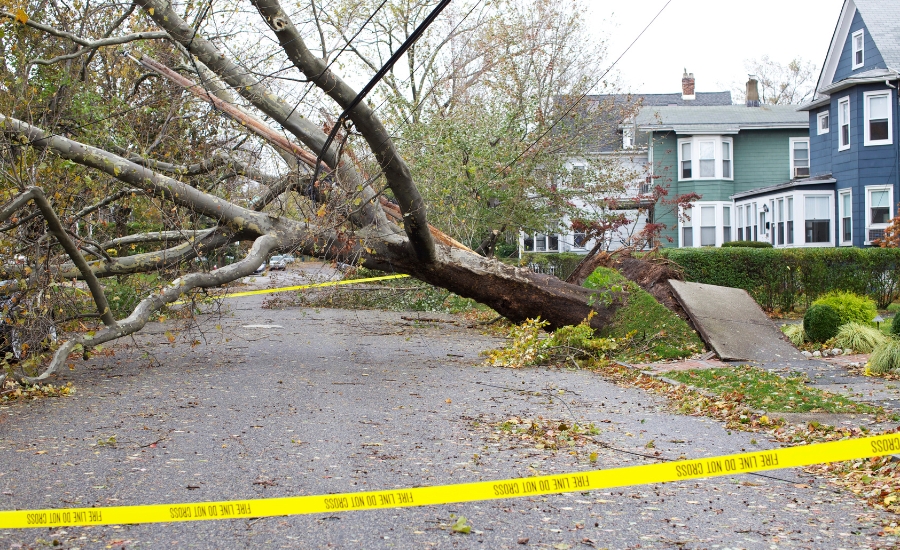
Storm-damaged trees blocking streets create immediate liability concerns for property managers and demonstrate why proactive fall risk assessments are essential for rental properties.
Why Fall Is the Best Season for Rental Property Tree Assessments
Fall represents the optimal window for comprehensive tree risk assessment across rental portfolios. This timing provides strategic advantages that experienced property managers have learned to leverage.
Seasonal Advantages of Fall Assessments
- Tree Dormancy Visibility: Trees entering dormancy reveal structural issues more clearly.
- Weather Stability: Stable fall weather provides ideal conditions for thorough inspections.
- Service Availability: Professional tree services typically have greater availability and more favorable scheduling.
- Planning Time: Property managers still have time to address problems before winter weather arrives.
How Fall Inspections Reduce Insurance and Emergency Costs
Emergency tree services during winter storms carry premium pricing due to urgency, equipment demands, and scheduling challenges. Building preventive maintenance into annual budgets reduces exposure to these unexpected expense spikes.
From an insurance perspective, documented fall assessments demonstrate proactive risk management. Missouri insurance practices show that property owners who maintain regular assessment schedules often receive more favorable claim outcomes when storm damage occurs.
That’s why Mathias Precision Tree Service provides detailed documentation that supports insurance claims and demonstrates the professional assessment standards insurance companies expect from responsible property managers – we recognize the challenges property managers face and provide the confidence you need to act decisively.
Systematic Tree Risk Assessment Process for Multiple Properties
Effective tree risk assessment for property managers requires a systematic approach that balances thoroughness with efficiency across multiple locations. Property managers who work with experienced Certified Arborists develop assessment strategies that protect both tenants and investment returns.
Property Prioritization Strategy
Begin assessments with properties that have the highest risk factors:
- Older rental homes with mature trees
- Properties with previous storm damage
- Units near power lines
- Locations with tenant complaints about tree conditions
- Properties in Hazelwood’s established neighborhoods with mature tree canopy requiring dead tree removal under county code
- St. Charles historic areas near the Missouri River where soil conditions and tree age create higher stability risks
What a Certified Arborist Looks for During Assessments
Working with ISA Certified Arborists ensures comprehensive evaluation that untrained property managers cannot provide:
Structural Analysis:
- Root system health and stability assessment
- Trunk and branch structural integrity evaluation
- Canopy balance and weight distribution analysis
- Soil condition impact on tree stability
Health Evaluation:
- Disease identification and progression assessment
- Insect damage evaluation
- Environmental stress factor analysis
- Growth pattern and vitality assessment
Property Manager Visual Inspection Checklist
While professional assessment remains essential, property managers should document specific observable conditions during initial walkthroughs:
Immediate Concern Indicators:
- Obviously dead or dying trees
- Visible root damage or exposed roots
- Fungal growth on trunks or major branches
- Hanging or broken limbs over structures or walkways
- Trees with hollows or cavities
- Insect damage signs
- Canopy dieback exceeding 25%
- Soil level changes around root zones
Documentation Requirements:
- Detailed photographic records with date stamps for each assessed tree
- Property-specific files including tree location maps
- Condition assessments and recommended action timelines
- Professional evaluation reports from Certified Arborists
Properties with construction activity or recent excavation near trees require special attention for root system damage that may not be immediately visible.
EXPERT INSIGHT: “Property managers often focus only on obviously dead trees, but the most dangerous situations involve trees that appear healthy but have structural weaknesses. A Certified Arborist can identify these hidden risks before they become emergencies.” – Josh Mathias, ISA Certified Arborist and Owner of Mathias Precision Tree Service
Tree Hazards Property Managers Must Address Immediately
Certain tree conditions create immediate liability risks that require prompt professional attention. Understanding these critical warning signs helps property managers prioritize emergency interventions and protect tenant safety.
Dead and Dying Trees
Trees showing more than 50% canopy dieback present immediate removal candidates. O’Fallon’s municipal guidelines recommend removal when ash trees reach 50% decline due to Emerald Ash Borer damage, and this principle applies to other species facing disease or environmental stress as well.
Critical Dead Tree Indicators:
- Complete absence of leaves during growing season
- Bark falling off in large sections
- Brittle branches that break easily
- Woodpecker activity indicating insect infestation
Dead trees can fail without warning, particularly during weather events. The unpredictable nature of dead tree failure makes them the highest priority for removal in rental property settings where tenant safety is paramount.
Structurally Compromised Trees
Structural compromise often develops gradually, making professional assessment essential for early detection:
- Recently developed lean patterns
- Soil heaving around the root zone
- Exposed root systems after weather events
- Cracks in the trunk or major branches
This is particularly concerning in St. Charles area properties, where clay soil conditions can contribute to root instability during wet periods.
Disease and Pest Indicators
Both disease and pest symptoms require immediate professional evaluation to prevent sudden failure.
Fungal and Disease Signs:
- Bracket fungi growing on tree trunks
- Unusual leaf discoloration or early leaf drop
- Oozing or bleeding from bark
- Cankers or swollen areas on trunk or branches
Pest Damage Assessment:
- Exit holes from boring insects
- Sawdust-like material around tree base
- Unusual insect activity
- Branch dieback patterns indicating pest stress
Invasive species, like the Emerald Ash Borer, can weaken trees rapidly, and prompt professional identification helps property managers respond appropriately to these threats in a timely fashion.
How Tree Risks Impact Liability and Insurance for Rental Properties
Understanding the insurance and liability implications of tree risks helps property managers make informed decisions about maintenance investments and risk management strategies.
Property Manager vs. Property Owner Responsibilities
While property owners ultimately bear legal responsibility for tree-related damage, property managers often face liability for negligent maintenance practices. Clear documentation of assessment efforts and prompt response to identified hazards provides essential legal protection.
Insurance companies increasingly scrutinize property maintenance records during claims investigations. Properties with documented regular assessment and maintenance schedules typically receive more favorable claim treatment than those lacking maintenance records.
Tenant Safety and Communication
Establish clear communication protocols with tenants regarding tree safety concerns. Tenants should have a direct reporting mechanism for tree-related hazards, and property managers must respond promptly to tenant safety reports.
Document all tenant communications regarding tree conditions. This record-keeping proves valuable if liability questions arise following storm damage or tenant injury incidents.
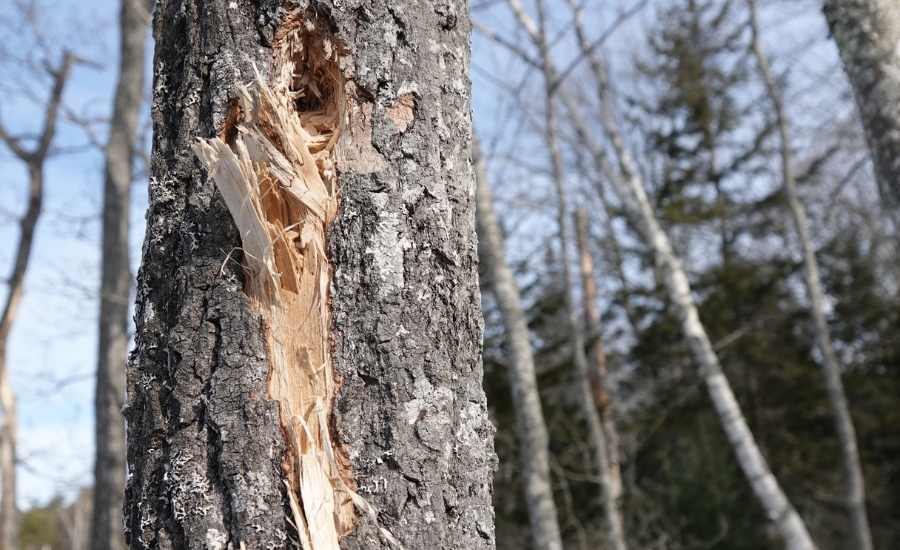
Visible trunk damage like this requires immediate professional evaluation by ISA Certified Arborists to determine removal necessity and prevent tenant safety hazards.
Frequently Asked Questions About Tree Risk Assessments
How often should rental properties undergo a tree risk assessment?
At least once a year, ideally in early fall before winter storms. High-risk properties, such as those in O’Fallon’s historic downtown, St. Peters’ established neighborhoods near Mid Rivers Mall, or St. Charles areas near the Missouri River, may require biannual inspections due to mature tree canopies, previous storm damage history, or soil stability concerns.
Does scheduling tree work in fall and winter really save money?
Yes. Crews can work with less disruption to tenants, and grouping multiple properties in the same season reduces travel and service costs.
What qualifications should I look for in an arborist?
Choose an ISA Certified Arborist with local experience and liability insurance. For property managers, a provider experienced with multi-site portfolios is best.
How does Mathias Precision Tree Service support property managers specifically?
From coordinated service plans to priority storm response, we help property managers minimize risks while supplying the documentation required to satisfy regulators and insurers.
Let Mathias’ Professional Tree Risk Assessments Protect Your Investments
Proactive tree risk assessment represents sound business practice for property managers throughout St. Charles County. The combination of legal compliance requirements, tenant safety obligations, and financial protection makes fall assessment an essential component of responsible property management and Mathias Precision Tree Service is the partner you can rely on.
Don’t wait for winter storms to expose tree hazards at your rental properties. Contact Mathias Precision Tree Service at 314-322-7690 or request a property portfolio assessment to ensure your properties meet St. Charles County requirements while protecting your tenants and investment.


